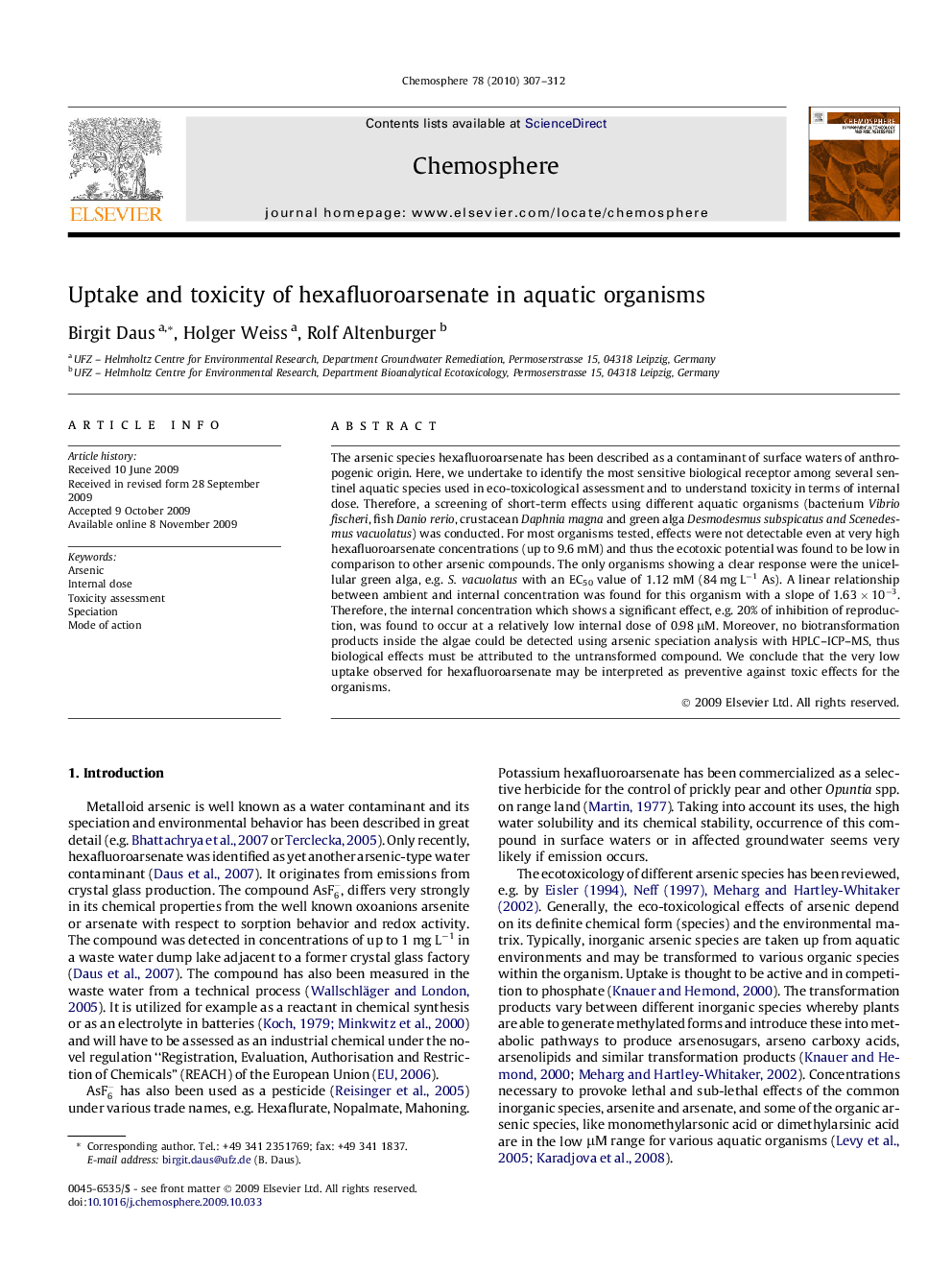| Article ID | Journal | Published Year | Pages | File Type |
|---|---|---|---|---|
| 4411874 | Chemosphere | 2010 | 6 Pages |
The arsenic species hexafluoroarsenate has been described as a contaminant of surface waters of anthropogenic origin. Here, we undertake to identify the most sensitive biological receptor among several sentinel aquatic species used in eco-toxicological assessment and to understand toxicity in terms of internal dose. Therefore, a screening of short-term effects using different aquatic organisms (bacterium Vibrio fischeri, fish Danio rerio, crustacean Daphnia magna and green alga Desmodesmus subspicatus and Scenedesmus vacuolatus) was conducted. For most organisms tested, effects were not detectable even at very high hexafluoroarsenate concentrations (up to 9.6 mM) and thus the ecotoxic potential was found to be low in comparison to other arsenic compounds. The only organisms showing a clear response were the unicellular green alga, e.g. S. vacuolatus with an EC50 value of 1.12 mM (84 mg L−1 As). A linear relationship between ambient and internal concentration was found for this organism with a slope of 1.63 × 10−3. Therefore, the internal concentration which shows a significant effect, e.g. 20% of inhibition of reproduction, was found to occur at a relatively low internal dose of 0.98 μM. Moreover, no biotransformation products inside the algae could be detected using arsenic speciation analysis with HPLC–ICP–MS, thus biological effects must be attributed to the untransformed compound. We conclude that the very low uptake observed for hexafluoroarsenate may be interpreted as preventive against toxic effects for the organisms.
